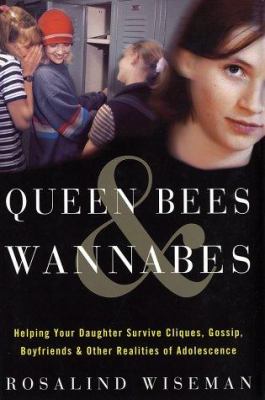Bullying is nothing new. Unfortunately. And I still have the emotional scars from 7th grade to prove it. But for our 21st century kids, bullying is only amplified with the lively presence of social media in all our kids’ lives, meaning now bullying that once happened mostly in school can follow a child home 24/7.
The first time my daughter came home crying because another girl made fun of her T-shirt, I felt deflated. Not just as a mother feeling helpless, but because the feelings of hurt I experienced in my own childhood came flooding back to me. I’m sure a lot of you can relate.
After the hurt subsided and the anger set in, I turned mama bear, and wanted to do everything in my power to protect my baby from the hurt she was experiencing.
Except, I couldn’t.
It’s inevitable that my daughters will meet people in their lives who will try to make them feel bad about themselves. They will face conflict in friendships, have their hearts broken, and encounter people who are just plain mean. That’s life. We can’t shield them from all of those things — nor should we.
Instead, what I think my job is as a parent, is to try my best to help boost their self-confidence, teach them kindness and empathy, and give them the skills and actual words so they can manage negative situations in an appropriate way.
When it comes to bullying, I want to teach my kids to follow First Lady Michelle Obama’s family motto: “When they go low, we go high.”
Related: 8 outstanding books that teach empathy for kids with special needs
So in researching how to handle our own conflicts that we have faced in our family, I’ve put together 5 terrific tips and resources to help parents prevent and manage bullying and other negative situations. They’ve really helped me, and I hope they help you too.
1. Be a role model
Kids learn communication skills, empathy, and kindness at home. Our children — from birth, really — learn from our actions, even when it seems like they are not paying attention. Call that parent who cuts you off in the school drop-off line a jerk in front of the kids, and you’re sending them a clear message that it’s okay to call people names when you’re angry. (It’s okay to think it, because, trust me, you will; just try not to say it out loud. And if you fail — no judgments. We all lose our tempers from time to time.)
Overall, just consider that when we treat our partners, neighbors, teachers, and others in our community with kindness and respect, we are modeling how our children should treat others.
Part of that is learning how to disagree appropriately, an important tool against bullying. I’m a big fan of Kid President and his latest YouTube video, How to Disagree, which offers six steps on how to confidently and respectfully have disagreements with others. Watch it with your kids and then do Step 6 together.
2. Use some of these fantastic resources
Knowledge is power and you’ll be better armed to talk to your child about bullying if you have the facts, know the warning signs, and are equipped with the tools to have meaningful conversations and offer support.
Thankfully, there are terrific resources and helpful books to help parents and kids of all ages:
– StopBullying.Gov
Both of these websites provide fantastic information for parents on bullying and cyberbullying, as well as webisodes, facts, and helpful information for kids of various ages.
– GirlsHealth.Gov
Another website with great info, this one is dedicated to girls in particular, as you can tell, and covers hundreds of health and mental health topics.
– Bystander Revolution
A fantastic website that will appeal to tweens and teens with its personal experience videos. Kids, young adults, and grown-up celebrities share their stories about bullying, advice, and offer resources for those going through it.

– Queen Bees and Wannabes by Rosalind Wiseman
As the mom of two girls, ages 9 and 12, I highly recommend this book by Rosalind Wiseman. I had heard about the book for years — the movie Mean Girls was based on it — but with my oldest daughter starting 7th grade this year, I felt it was time to check it out. I just finished reading it and only regret not buying it sooner.
Wiseman breaks down female roles and friendships, helps you check your own baggage as a parent (thank you!), and offers excellent tips for building a communicative relationship with your daughters and empowering them to make good decisions. I think parents will appreciate that it’s not preachy, and it doesn’t put down girls with negative generalizations and stereotypes (double thank you). It’s a truly insightful manual we can all use to help us navigate the bumpy landscape of bullying and middle school today.
– Bucket Fillers
My daughters’ elementary school uses the Bucket Filler program to create an environment of kindness. It’s a series of books coupled with a character development program that uses a bucket as a metaphor for our emotional health. When you treat someone kindly, you fill their bucket with positive feelings. If you treat someone unkindly, you “dip” into their bucket and remove their good feelings. It’s a lovely concept and one that young children can truly understand and put to use.
Like the time I lost my temper and yelled at my youngest daughter, then just 6 years old. She replied back that I was “dipping into her bucket” and I should speak to her a kinder way. Amazing! And she was right.
3. Talk about bullying — and other stuff — a lot
It’s important to be a family that communicates, and that includes talking about all the good stuff. Especially the good stuff. Go around the dinner table and share your favorite part of the day. Tell your kids stories about your own middle school years — even the not so great experiences. Share family stories and history with your kids. Get to really know your children. If sharing feelings and experiences becomes part of your everyday lives, it will be easier for your child to talk to you if they are being bullied. Keeping the lines of communication open with your children is beneficial and necessary in so many ways.
Related: A must-watch anti-bullying video for kids and parents
4. Take hurt feelings seriously — but differentiate between bullying and other bad behavior
If your child comes to you with a problem, or you discover that they are getting bullied, it’s very important to take it seriously. Don’t brush it off and try to minimize their feelings. Don’t tell them to just ignore the bully. Be supportive and listen to a child’s feelings without judgment, criticism, or blame. More importantly, assure your child that being bullied is not their fault. Once you know what’s happening, you can constructively go over ways to deal with the issues. That might include role-playing, asking your child what can be done to make them feel safe, or reaching out to another adult to talk about it (like a school counselor or therapist, or reporting it to school administration). Make sure your child is involved in the solutions so they can gain confidence and develop problem-solving skills.
On the other hand, it’s important to distinguish bullying — which is targeted, ongoing, and pervasive — from smaller slights. “Bullying” can be incredibly overused as a catch-all characterization of bad behavior. Kids hear about it a lot, and they may be likely to use it to describe something like teasing. So while all hurt is important to discuss, it’s also important to reinforce that if a classmate makes fun of your sneakers, tells a joke about you, or cuts in front of you in line at the monkey bars, that is not always bullying. It’s not good behavior — but it’s not necessarily bullying either.
5. Don’t freak out if your child is the bully
This one is a hard one. What if your kid is the one doing the bullying on the playground? You may have a hard time accepting it, perhaps denying that your sweet little baby is the mean kid in class. You may lash out at parents or teachers who come to you with the issue. You may begin to question where you went wrong. All this may lead you to come down hard on your child, and also on yourself. Try not to do that.
First, take a deep, deep breath. Next, talk to your child, kindly. Ask questions instead of making accusations. Find out what’s going on in their life to make them act out in this way. Are they trying to fit in better with a certain group of peers? Are there stressful events happening in their life you’re not aware of? Try to learn as much as possible about your child’s feelings.
Once you’ve established possible reasons for bullying behavior, talk about how their actions make others feel. Teaching empathy is a fantastic tool for stopping bullying.
And don’t ever be embarrassed to reach out for help — to a teacher, the principal, a family friend who’s a behavioral expert, a therapist. None of us is a perfect parent, but doing the best you can for your child is always great parenting.






I went to a parent seminar last night about a program called C.O.B.R.A. It is taught from the perspective of prevention and it changed the way I looked at this problem and how I will be preparing myself and my kids from now on. I think every parent should take a look and research it. This problem is escalating fast and one death to suicide because of bullying is one too many.